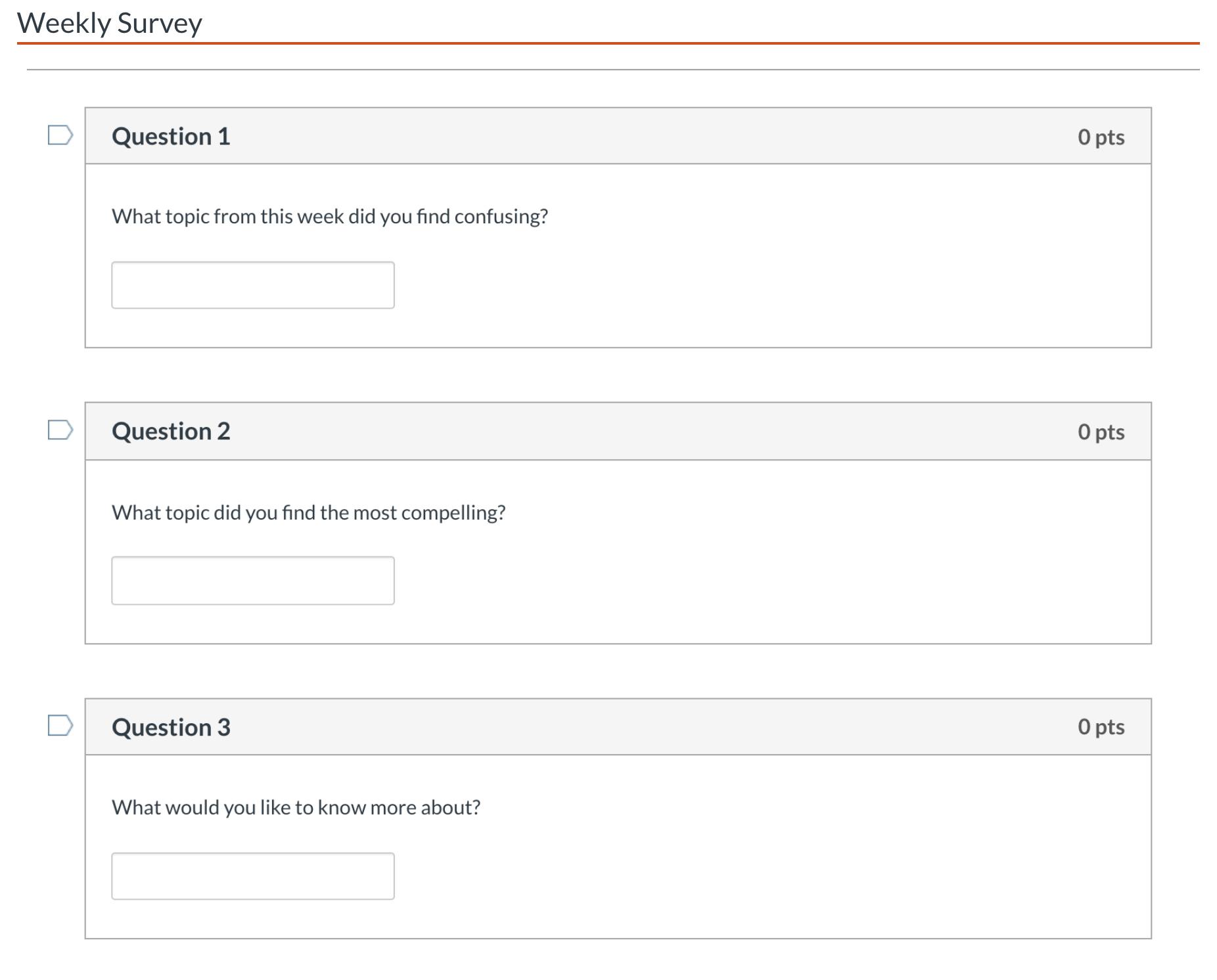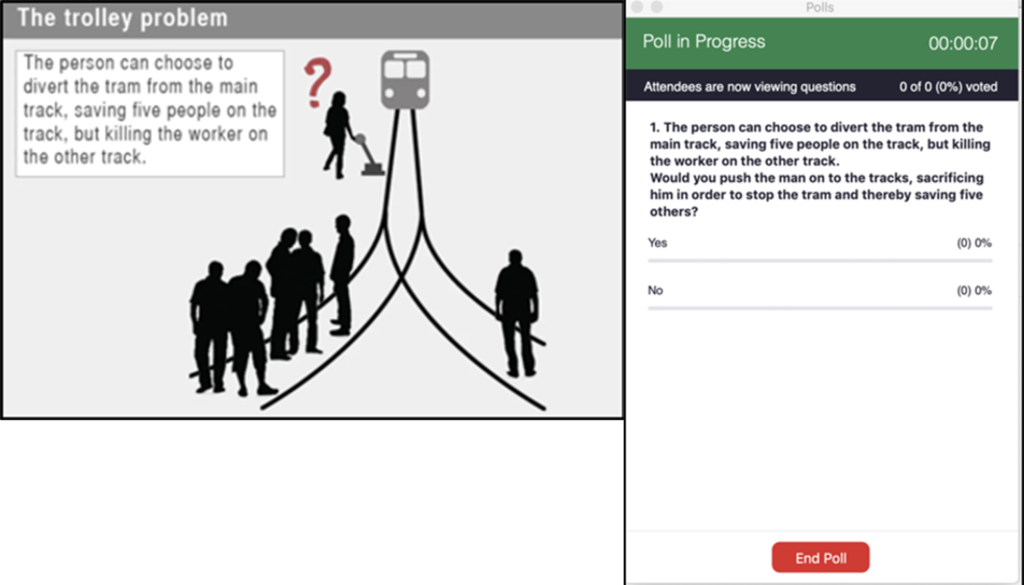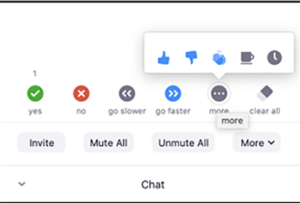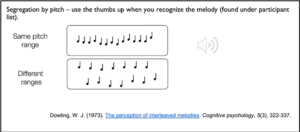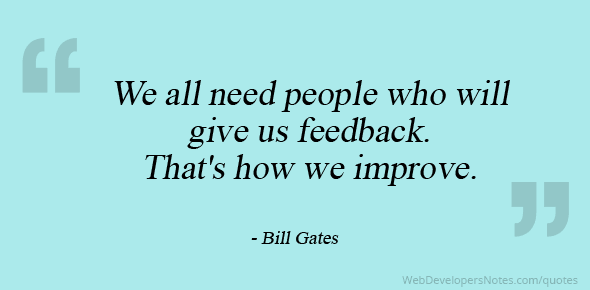
This blog post is an Instructor Spotlight authored by Xiaohui Chang. Xiaohui is an Associate Professor of Business Analytics in the College of Business.
Introduction
Teaching an online course can feel like a solitary experience, and it can be isolating for students as well. Don’t we all wish we could get to know our students better? In this post, I’ll share some of my teaching practices that help me connect, support, and engage our online students.
First, a little background about my teaching, especially online teaching. I have been heavily involved in undergraduate and graduate teaching since 2014 and have taught more than 2000 students (2047 to be exact) under a variety of teaching modalities including traditional face-to-face classes, online courses with Ecampus, synchronous class sessions due to COVID-19. The courses I teach are mostly quantitative, including business statistics and business analytics. Since my first online class in Summer 2017, I have delivered 8 online classes with 347 students in total. Besides my extensive online teaching experience, I have attended many workshops to improve my skills, had numerous productive conversations with colleagues and Ecampus instructional designers, and acquired knowledge in theory and practice from books and websites. Most importantly in the past several years after developing the tricks and practices described below, I have put them to the test in my online classes.
Most of my practices revolve around one key idea: provide proactive support to students, which is also advocated by Ecampus in their Online Teaching Principles. The two principles that touch on this type of proactive support are (1) Reach out and (2) Refer and Cultivate Inclusion.
What does this look like in action? In this post, I will share some examples of how I apply these principles to demonstrate care, connect with students, and proactively support those that may be struggling. My hope is that other instructors will find methods that resonate and work for your students as well.
Employ Empathy Statements in Email and Other Communications
Empathetic emails and other communications are essential in establishing supportive interactions with students but they don’t get the amount of attention and effort that they truly deserve. First of all, emails are undoubtedly the most popular tool used by students to connect with faculty. On a 5-point Likert-type (1=never, 2=sometimes, 3=about half the time, 4=most of the time, 5=always), emails are rated 3.53 which is the highest among all tools used. Online instructors spend hours responding to student emails every day. I receive an email like the following anywhere between once a week to a few times each week.
“I am sorry for reaching you so late … I just realized this issue now with all of my classes. I might have been distracted by … at the moment, causing me to lose certain grades, but I am trying to be more attentive moving forward … Is there any way I could still get points for my missing assignments? Thank you for your understanding, and I’m sorry again for the trouble.”
Quote from student email
In face-to-face interactions, I try to be straightforward. My natural response to an email like this would simply be a description of the student’s missed assignments and a discussion of the late penalty policy in this course. After drafting a response email, I try to pause for a while, re-read the student’s email, and try to put myself in their shoes.
After teaching at OSU for a few years, I noticed that many of our students are shouldering multiple roles and responsibilities while attending school full time. According to the 2020 OSU survey collected from a total of 1,190 students, close to 47% of the students are working full time, 20% are working part-time, and 29% are caregivers to a child or a family member. A few of my students have been serving in Afghanistan while taking my online classes. Students’ commitments outside of class increased even more during this unprecedented COVID era. I doubt I would do a better job than my students who are wearing multiple hats in staying focused in all of these courses and keeping track of tens of due dates every week. I strongly believe that getting into an empathetic mindset not only helps me relate to them, listen to their stories, and feel their frustration, but also makes students feel that they are not just another number. In my final response to the aforementioned email, I start my reply with a paragraph like the following and discuss the missed assignments and late penalties in the second paragraph.
“Sorry to hear that you’ve been distracted by …. I understand that it can get quite difficult to stay on top of everything at the moment. Please don’t hesitate to reach out to me or the Ecampus academic and student support services if we can be of any help to you. We are here to support all of our students to succeed.”
Instructor email response
This additional paragraph takes very little time to write but carries a long way to foster a supportive online learning environment. Some of my students shared this feedback in my teaching evaluations.
“For someone that is off-campus, this was a great feeling that I wasn’t just another student, I almost felt as if I was her only student, that’s what that little note meant.”
Quote from student evaluation
I highly recommend all online instructors to consider using empathy statements in their emails and other communications with their students. They mean more to your students than you believe. You can find more information about empathy in online instruction via Michelle Pacansky-Brock’s Humanizing Infographic and in the Humanizing Online Learning blog post by Tianhong Shi.
Restructure Office Hours – “Ask Me Anything Hours”
Research studies have shown that high-quality student-faculty interactions are linked with many benefits ranging from academic success to student retention (Kuh et al. 2010, Tinto 1997).
For online classes, besides email messages, virtual office hours are another useful way to engage student and faculty interactions. Nevertheless, in the 2020 OSU Survey, when asked which tools they use to communicate with faculty, the average score for emails was 3.53, compared to a mere 1.59 for virtual office hours. Smith et al. (2017) recommends that faculty and higher education institutions “make it explicit what students might get out of office hours”, “create nurturing classroom environments by promoting friendly and dedicate attitudes toward teaching among faculty,” and “openly and proactively promote office hours.” Because many online students are not aware of the purpose of office hours, following the suggestions from my colleague, Dr. Jason Stornelli, I have renamed all my office hours to “Ask Me Anything Hours” to make the sessions informative and inviting. I have also tried to proactively promote these sessions through Canvas announcements, groups emails, and one-on-one emails. The student attendance rate has gone up since then. This further cultivates a supportive and welcoming environment for the students, inciting responses such as the following:
I never got to take advantage of the office hours, but I’ve never had an online instructor who encouraged visiting them so much, which felt very inviting. I always felt like I had a voice and was cared about.
Quote from student evaluation
Provide Constructive and Personal Feedback for Students to Reflect and Improve Upon
Many of my students also appreciate the personal feedback they received after the exams and some important assignments. Modern technologies including grading rubric and speed graders in Canvas have expedited grading significantly, but may limit the personal and constructive feedback from the instructors. For online classes, personal feedback is particularly important because it provides learners with valuable feedback in which to inform, reflect, and adjust their learning. In my classes, I first organize all exam questions according to their modules. After students complete the exam, I go through every student’s exam and identify their individual points of weakness, i.e., the modules and the types of questions that they would need to improve upon. I also offer an extra credit assignment for students to make up some lost points from the exams; this will not change students’ grades substantially but offers an opportunity and an incentive for students to practice and learn from their mistakes.
I have never had a teacher email me personal feedback about one of my midterms. I went over the modules you said I should work on, and it really helped me on the final. The extra practice problems were very useful in not only raising my grades but also grasping the subject better.
Quote from student evaluation
Periodically Check in with Students Who Are Behind
Checking in with students who may be struggling in the class throughout the term plays a critical role in supporting our students. This has been made easier than ever by Canvas LMS. Under the Canvas gradebook, for each assignment, we can email those students who failed to submit an assignment or scored less than a specific score. For online classes with many assignments due every week, it becomes challenging to keep track of all the due dates even with the assistance of automatic to-do reminders from Canvas. In my emails, I also encourage students who are falling behind to seek assistance either from me, our Teaching Assistant, a private tutor, or TutorMe, which is an online tutoring platform for currently enrolled OSU Ecampus students, and connects them with live tutors in under 30 seconds and 24/7. Sometimes students are not aware or just forget about the many assistance and resources offered in this class.
Online students often feel invisible and insignificant. They need to be seen and valued by instructors. Many of the practices outlined above can be easily done and are essential in fostering a supportive learning culture and ensuring the success of students. I hope you try out some of these practices in your online classes and find at least one of them helpful for you and your students.
Feel free to contact me at Xiaohui.Chang@oregonstate.edu as I am always eager to hear your feedback and suggestions. Let us connect with and support each other in this online teaching journey as much as we do with our students.
Sources
- Kuh, G. D., Kinzie, J., Schuh, J. H., & Whitt, E. J. (2010). Student success in college: Creating conditions that matter. United States: John Wiley & Sons.
- Smith, M., Chen, Y., Berndtson, R., Burson, K. M., & Griffin, W. (2017). Office Hours are Kind of Weird”: Reclaiming a Resource to Foster Student-Faculty Interaction, InSight: A Journal of Scholarly Teaching, 12, 14–29.
- Tinto, V. (1997). Classrooms as communities: Exploring the educational character of student persistence. Journal of Higher Education, 68, 599–623.
- 2020 OSU Ecampus Annual Student Survey Report.
- Ecampus Online Teaching Principles. The Oregon State University Ecampus Online Teaching Principles are licensed under a Creative Commons Attribution-Non-Commercial 4.0 International license.





